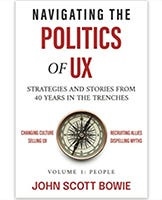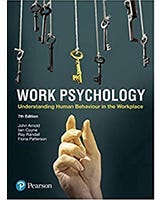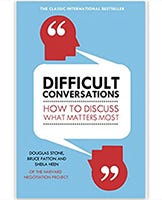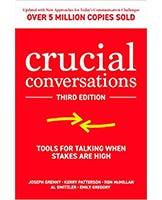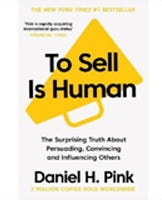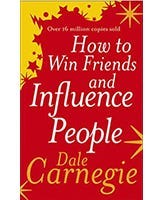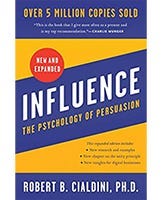The work that lets you do the work

I was having an excellent conversation recently with a Product Manager friend of mine 👋 about stakeholder management, influence and generally manoeuvring people and politics so that you and your team have even a chance of getting the design work done.
Regular readers will know I love a book list, so here’s one just for managing and influencing UX work, decision-makers and stakeholders.
I’ve divided it into three sections,
UX specific — tactics and strategies to align stakeholders around the work
Workplace in general — wider context for dealing with humans at work
Outright manipulation — leaning into the dark pattern library (see what I did there..)
Let’s go.
1. UX specific
Let’s start with books about working in UX, by people who work in UX:
Dealing with general UX nonsense
There’s one book that absolutely nails this topic, so I’m starting there. No matter your level of experience, you’ll find something in here that resonates and something you can learn, but particularly for those leading big things in complex environments, that keep falling over.
Navigating the Politics of UX: Strategies and Stories from 40 Years in the Trenches by John Scott Bowie
The next might be more of use to mid-to-lead level UXers wanting to learn the basics of UX stakeholder management, and trying their hand at influencing outcomes for the first time.
Sweet Spot UX: Communicating User Experience to Stakeholders, Decision Makers and Other Humans by Mike Newman
Getting buy-in for research
Getting to do and continue doing UX research alone can require some serious influencing skills, as I’ve mentioned before. Here are two of my favourite books about how researchers and UX Leads can influence budgets and outcomes.
It’s Our Research — getting buy-in for stakeholder experience research projects by Tomer Sharon
Think Like a UX Researcher: How to Observe Users, Influence Design, and Shape Business Strategy by David Travis
2. Workplace in general
As with all topics it’s worth understanding the wider context of your immediate challenge. A general reading of work or workplace psychology, and the systems and political currents involved can be helpful.
Work Psychology: Understanding Human Behaviour In The Workplace by John Arnold, Iain Coyne, Ray Randall, Fiona Patterson
Dealing with sticky situations
Sometimes it’s about saying things we’re afraid to say, or approaching people who we think are not going to want to hear Sad News.
There are a few books out there that are great for managers who need to have HR-related conversations which might not initiall yseem relevant, but the skills and strategies contained therein can be applied to a range of challenging conversations in UX world from “we really need to do research” to “your Product is a mess”.
Difficult Conversations: How to Discuss What Matters Most by Douglas Stone, Bruce Patton and Sheila Heen
Crucial Conversations: Tools for Talking When Stakes are High by Joseph Grenny, Kerry Patterson, Ron McMillan, Al Switzler, Emily Gregory
The final one in this section is awesome if you find yourself beset by nonsense on all sides and are losing the will to live. Apart from the tactics and strategies provided, it will also just make you feel better about being where you are.
Leading from the Middle: A Playbook for Managers to Influence Up, Down, and Across the Organization by Scott Mautz
Outright manipulation
There are a lot of books out there on the topic of “influence” and I’ve included some of the obvious ones below, but it’s also worth learning from related fields where influencing people with diplomacy rather than a sledgehammer has a better outcome for your relationships.
Sales psychology
Don’t underestimate the value and use of sales psychology when trying to reach consensus or an outcome that you want.
This first book here explains how to connect with someone, identify what they need and help them “buy” your solution. This applies equally to UX people promoting a methodology, design solution or outcome, as to sales people selling software solutions or toothbrushes. It’s still dealing with people and understanding why they don’t just immediately do what we want them to do.
Why People Don’t Buy Things by Harry Washburn
And as Daniel Pink points out in this next book, everything we do is ultimately a sales process involving humans.
To Sell Is Human: The Surprising Truth About Persuading, Convincing, and Influencing Others by Daniel Pink
Relational psychology — in the workplace
There are a couple of great books where the writers have research backgrounds and therefore approach influence from the perspective of a) understanding other humans and their emotions and b) influencing them for mutually positive outcomes.
This first one provides an understanding of positive and negative emotions and how they play out in human interactions, with lots of useful examples of colleague interactions where a better understanding of what’s going on, can help you navigate through to a positive outcome. It’s still influence, it’s just not as overtly eeeevil as some sources.
Building Agreement by Daniel Shapiro and Roger Fisher
And I can imagine some of you thinking “yes but I just hate dealing with people”. I agree; people are interesting, but annoying. If this sounds like you too, then check this next one out — it’s all about building relationships so that you can get stuff done, picking your battles and knowing when to disengage — and how. And it’s chock full of proper references (yum).
Collabor(h)ate: How to build incredible collaborative relationships at work (even if you’d rather work alone) by Deb Mashek PhD
This last one is one of my favourites because it leans into the ‘it’s not them, it’s you’ reality of dealing with people. Some peoples’ brains are alien landscapes that you can only hope to understand and navigate — but never change.
Surrounded by Idiots: The Four Types of Human Behaviour (or, How to Understand Those Who Cannot Be Understood) by Thomas Erikson
Hammer time
OK, I’ll finish with some of the obvious ones, but be aware that when you set out to overtly influence people, much with dark patterns in your UI, you can get called out on them.
First, a classic whose message is essentially, be nice to people (and then influence them)
How to Win Friends and Influence People, by Dale Carnegie
Next, one of the darker ones which basically outlines a set of behaviour nudge techniques that can be used to get people to do things. Like manipulative UI patterns applied to humans. Ick.
Influence: The Psychology of Persuasion by Robert Cialdini
The Art of War by Sun Tzu
In case you haven’t heard of this one before, it’s written by Sun Tze, most likely a military advisor, around 776–471 BCE. Although it is literally military tactics, it also has wider learnings for people leading people in tricky situations — such as how to choose your battles, know your ‘enemy’, perfect your timings and make and execute your plans.
There are a ton of books out there that promise the world, but as always — know your user and do your research before deploying ninja tactics on people you might need to work with again in future!




